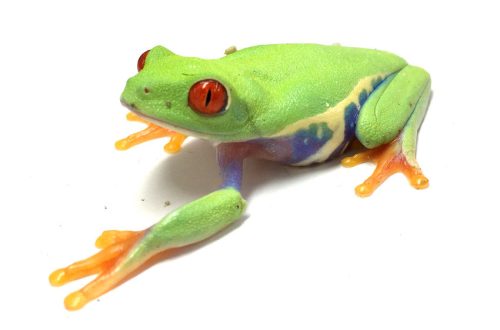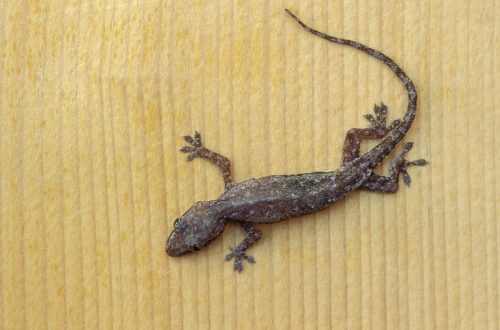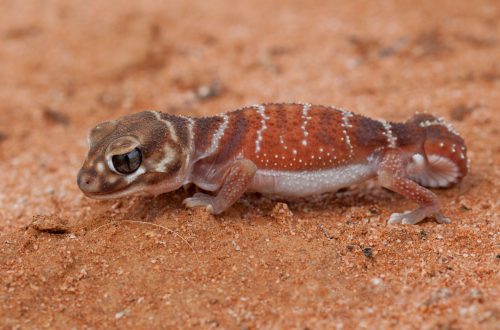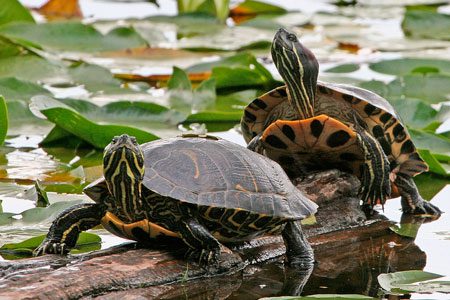
Where and how do red-eared turtles live in nature
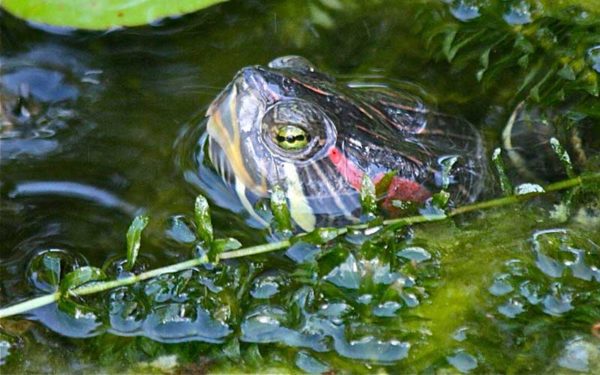
The red-eared turtle is also called the yellow-bellied turtle for the characteristic coloration of the abdomen and paired spots on the side surfaces of the head. They belong to freshwater turtles, therefore they prefer rather warm reservoirs of tropical and temperate climatic zones as habitats. Red-eared turtles live in freshwater rivers and lakes with fairly warm waters. Reptiles lead a predatory lifestyle, prey on crustaceans, fry, frogs and insects.
Where do red-eared turtles live
Red-eared turtles in nature mainly live in North and Central America. Most often, representatives of the species are found in the United States from the northern regions of Florida and Kansas to the southern regions of Virginia. To the west, the habitat extends to New Mexico.
Also, these reptiles are ubiquitous in the countries of Central America:
- Mexico;
- Guatemala;
- El Salvador;
- Ecuador;
- Nicaragua;
- Panama.

On the territory of South America, animals are found in the northern regions of Colombia and Venezuela. All these places are the original territories of his residence. At the moment, the species has been artificially introduced (introduced) to other regions:
- South Africa.
- European countries – Spain and the UK.
- Countries of Southeast Asia (Vietnam, Laos, etc.).
- Australia.
- Israel.
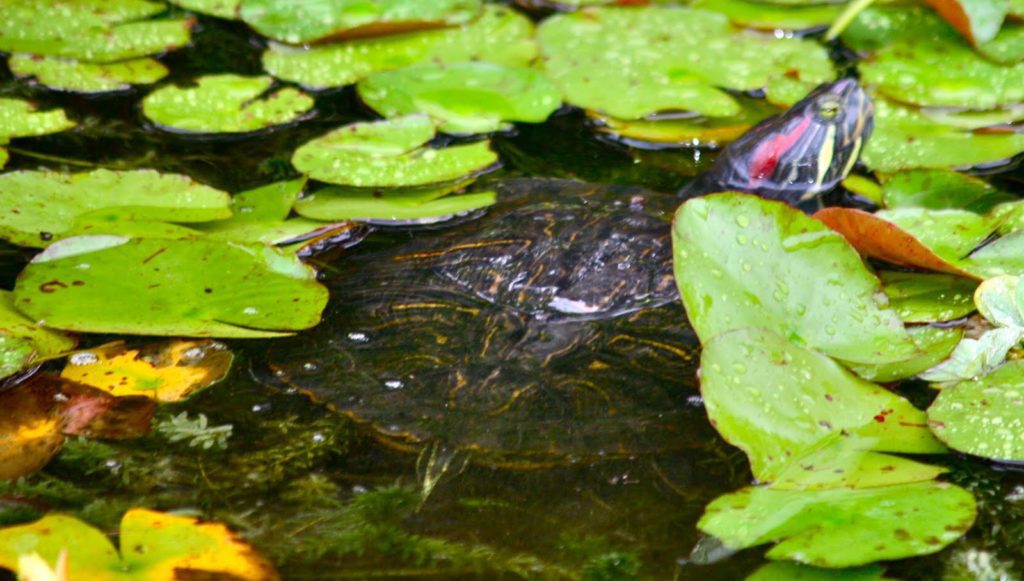
The species has also been introduced to Russia: red-eared turtles appeared in Moscow and the Moscow region. They can be found in local ponds (Tsaritsyno, Kuzminki), as well as in the river. Yauza, Pekhorka and Chermyanka. The scientists’ initial assessments were that the reptiles would not be able to survive due to the rather harsh climate. But in fact, turtles have taken root and have been living in Russia for several years in a row.
The habitat of the red-eared turtle is exclusively freshwater reservoirs of small size with sufficiently warmed waters. They prefer:
- small rivers (coastal zone);
- backwaters;
- small lakes with swampy shores.
In nature, these reptiles spend most of their time in the water, but regularly come ashore to warm up and leave offspring (when the season comes). They love warm waters with an abundance of greenery, crustaceans and insects, which the turtles actively feed on.
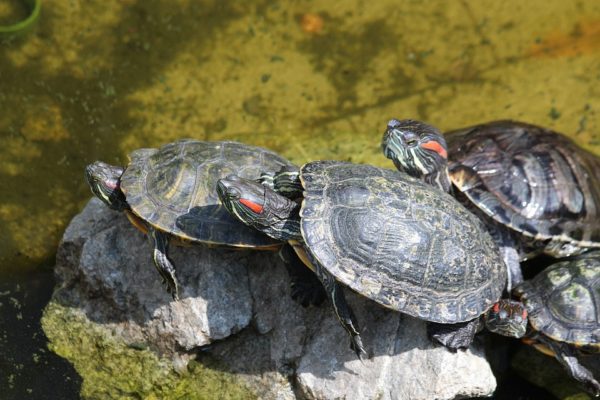
Lifestyle in nature
The habitat of the red-eared turtle largely determines its lifestyle. She can swim well and moves quite quickly in the water, easily maneuvering with the help of powerful paws and a long tail.
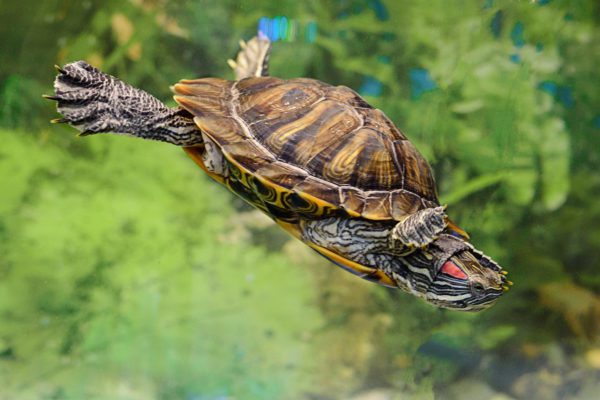
However, even with these abilities, the reptile cannot keep up with the fish. Therefore, basically the red-eared turtle in nature feeds on:
- water and air insects (beetles, water striders, etc.);
- eggs of frogs and tadpoles, less often – adults;
- fish fry;
- various crustaceans (crustaceans, maggots, bloodworms);
- various shellfish, mussels.
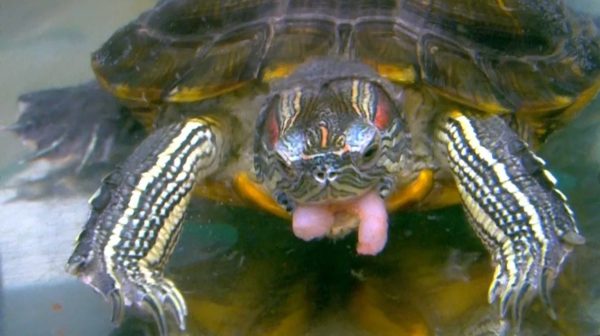
Reptiles prefer a warm environment, so when the water temperature drops below 17-18°C, they become lethargic. And with further cooling, they hibernate, going to the bottom of the reservoir. Those red-eared turtles that live in nature in the equatorial and tropical zones remain active throughout the season.
Young turtles grow rapidly and reach sexual maturity by the age of 7. The male mates with the female, after which, after 2 months, she lays her eggs in a pre-made mink. To do this, the turtle comes ashore, arranges a clutch, which receives 6-10 eggs. This is where her parental care ends: the cubs that have appeared independently crawl to the coast and hide in the water.
Red-eared turtles in nature
3.6 (72.31%) 13 votes



